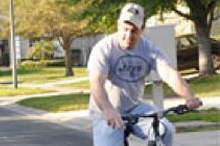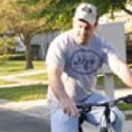

Seth Reichelson is being honored as a Champion of Change for his work to expand opportunities for young learners from communities historically underserved or underrepresented in tech fields.
From the White House to your house, I think we can all agree that we need to do a better of job of attracting students to computer science. We can see in our own communities that kids, especially girls, tend to lose interest in math and science as they grow older – and the evidence backs this up.
For example, 11 percent of the U.S. college-educated population worked in science, technology, engineering, or math (STEM) jobs as of 2009. Overall, there were almost four men for every woman in these STEM jobs. In particular, women were well-represented in the physical and life sciences (40%), but declined to only 27% of those working in the rewarding and high-opportunity fields of computer science or math.
Looking at the academic plans for first-year college students in 2010, only 1.5% of freshmen intended to major in computer science – far, far below the numbers needed to fill computing jobs.
Technology is everywhere: in our homes, cars, schools, airports, and pockets. But when it comes to technology, where are the girls? A good place to find them is in my classroom!
I started teaching at Lake Brantley High School three years ago, and had the opportunity to build an AP Computer Science program from scratch. To attract students who looked different from the classic computer science stereotype, I did many things differently: designed a course that was hands-on and fun; pitched it as one you could take with no prior experience; marketed to a broad cross-section of students, from cheerleaders and football players to the yearbook club and student government; and structured it with a “mastery learning” approach so that no one gets left behind. In making Computer Science more accessible and rewarding, I found that students – particularly girls – are more comfortable enrolling.
During my first year teaching at Lake Brantley my AP CS class went from 0 students to 60 students one week before school started. The second year it had grown to 144 students, 45% of whom were girls, and this year that numbered doubled again to more than 294 kids. Lake Brantley’s AP Computer Science program is one of the largest non-magnet computer science programs in the country, and its female participation exceeds the national College Board average by a significant margin.
For better or worse, kids today fear failure. So do their parents. Ninth grade parents want to know that enrolling their girls in computer science will not damage their confidence or hurt their GPAs. Kids don’t want to start high school with a class that is over their head, and be buried in work with no chance for an “A” grade. Implementing “Mastery Learning” eases their fears. Under this model, students are helped to master each learning unit before proceeding to a more advanced learning task.
I assure parents that if their child gets a bad grade I will call or email them and figure out what their kid needs to master, and then supply them with additional resources. Once the concept is mastered, I will change the student’s grade. Students build confidence while tackling advanced topics. Everybody wins.
Skill-building after school challenges such as IBM’s Master the Mainframe Contest, NCWIT’s Aspirations in Computing, Pleo robot outreaches, SECME, Zero Robotics, ACM Programming contests and whatever the students are interested in are great confidence booster for students. I seek out computer science competitions where there are no limits on the number of students that can participate in the contest and there is no luck involved. If you put in the hours, you will be successful. For example not many students can leave high school with main frame programming experience. Last year over 300 students from Lake Brantley are IBM mainframe masters.
So, my story is about one teacher’s methods gathered my many sources for helping kids find success and fulfillment in the sciences, but it can be replicated at any school near you. I tour the country with UVA’s Tapestry workshop training teachers on how to duplicate my success while collecting successful teacher’s ideas to make my program stronger every year.
No one can stop me…they can only hope to contain me.
Seth Reichelson is a Teacher at Lake Brantley High School.


